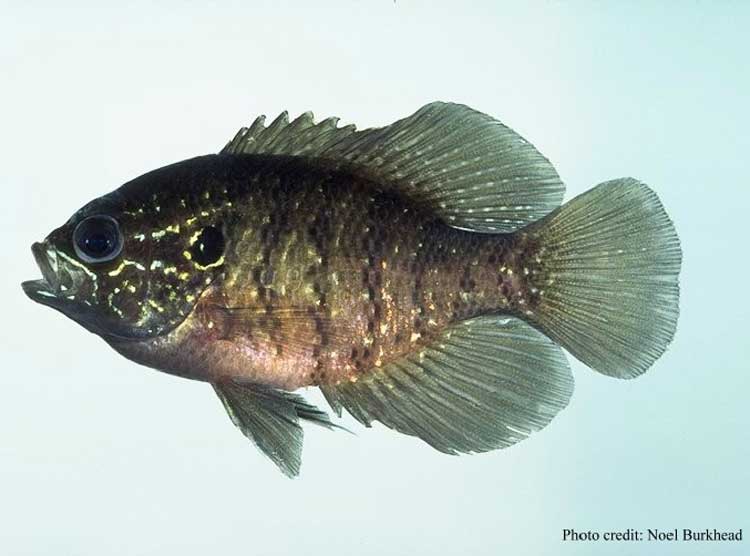Enneacanthus obesus (Source) Cladus: Eukaryota Name Enneacanthus obesus (Girard, 1854) Synonyms * Apomotis obesus Girard, 1854 References * Enneacanthus obesus Report on ITIS Vernacular Name ------ The banded sunfish (Enneacanthus obesus) is a Freshwater fish of the family, Centrarchidae. They can grow as an adult to become 2-3 inches long. Description The banded sunfish is similar to the blackbanded sunfish and has a very compressed and deep body. Its sides are iridescent and dark colored. There are dark bands on its side and nuptial males and females will develop blue specks on their bodies. Its mouth is upturned and its pectoral and tail fins are rounded. It will grow to an approximate length of 9.5 cm. Habitat The banded sunfish can be found in the Atlantic coastal region from New Hampshire south to central Florida. It is found in small ponds and backwaters of creeks to small and large rivers and boggy brooks over sand or mud in sluggish, acidic, heavily vegetated waters. Diet The banded sunfish feeds upon insects and microcrustaceans. Reproduction Spawning occurs from April through July. They can spawn when they become one year old. The male will construct a sand or gravel nest for the eggs to be laid in. Status The banded sunfish is currently endangered in Pennsylvania. It is globally stable though. * Connecticut Department of Environmental Protection - Endangered, Threatened & Special Concern Fish
Source: Wikispecies: All text is available under the terms of the GNU Free Documentation License |
|

